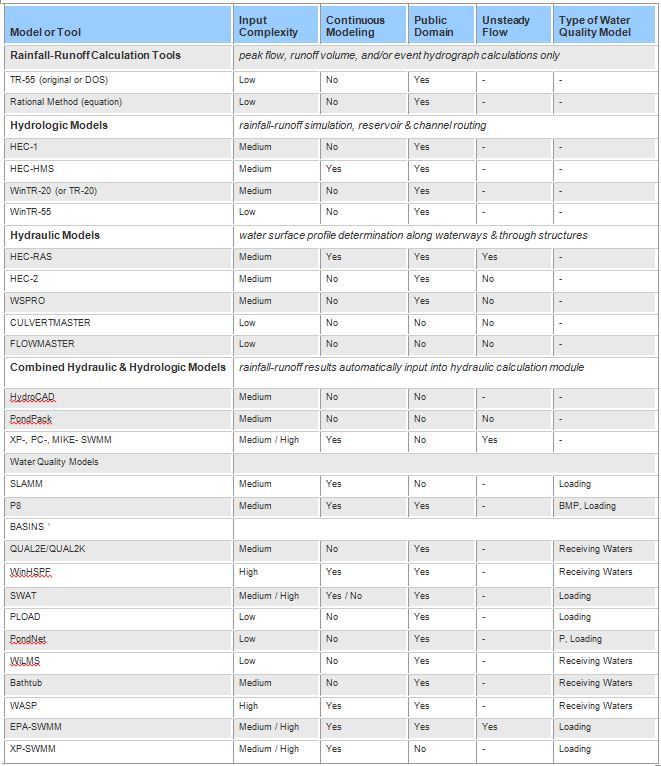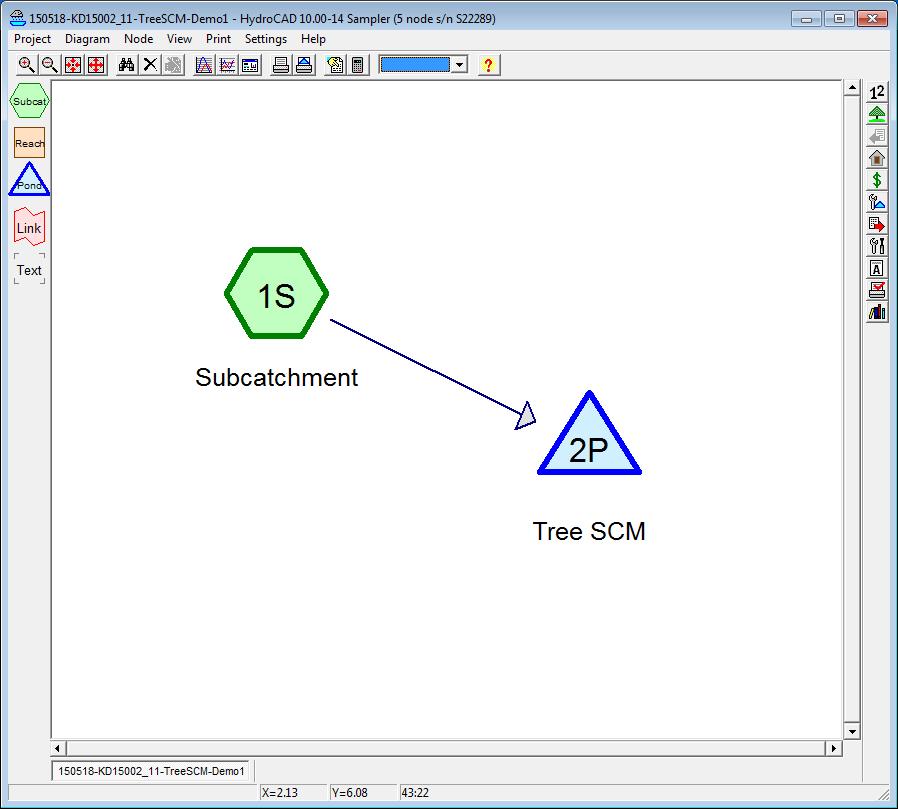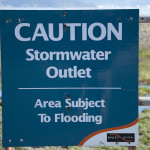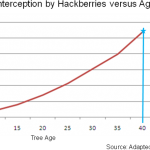Quantifying Stormwater Benefits of Trees Part 2: Single-Event Stormwater Models
Part 1 of this series described quantifying tree stormwater benefits for tree benefit calculators and for stormwater credits. Today we'll be going more in depth on single event stormwater models. This will simply be an introduction to various methods to quantify the stormwater benefits of tree stormwater control measures (Tree SCMs) and is not intended to be a comprehensive resource on stormwater modeling. We're about to get a little technical, so hang on…
This blog series only addresses Hydrologic and Hydraulic (H&H) models as applied to Tree Stormwater Control Measures (SCMs), and does not include water quality models. I divided the H&H models into ones that only model simple storm events – Single-Event Stormwater Models – and the ones that are capable of performing more-complicated continuous modeling – Continuous Simulation Stormwater Models. Today I'll talk about that first group, single-event stormwater models (continuous simulation stormwater models will be covered in Part 3).
Single-Event Stormwater Models
Single-event stormwater models, or hydrologic models, are largely based on empirical equations – that use experimental data – to predict Tree SCM impacts on stormwater characteristics.
Primary Uses
Some of the impacts predicted by these models include runoff volumes, peak flow rates, and time-related characteristics created by the Tree SCM, such as delays to the peak flow time to reach a specified outlet. In general, these Single-Event Stormwater Models can provide more information on the benefits of Tree SCMs than can be provided by simple tree benefit calculators or stormwater credit methodologies.
Single-event stormwater models are generally used to estimate expected volume, rate, or quality of stormwater, to design best management practices (BMPs) and hydraulic structures, and to evaluate the effectiveness of water quality treatment of SCMs (MN Stormwater Manual, 2015).[1]
There are a number of free- and for-cost methods and software programs out there, depending on your needs. The Minnesota State Stormwater Manual Wiki has compiled a great table (see Figure 2-1) comparing stormwater modeling programs for Single-Event and Continuous Simulation models, as well as other programs targeted at certain stormwater-borne pollutants. (Note: not all Stormwater SCM models provide direct inputs for Tree SCMs and other LID practices.)
In general, your choice of model should be based on your project goals and available data. What required inputs and outputs are available? What is the quality of the input data quality? What level of precision and output data is required?
In general, these Single-Event models are useful for routing a specific design storm or storm event (e.g. the 100-year storm), but provide less capacity to quantify the effects of or "fine-tune" model inputs for antecedent soil moisture, evapotranspiration, and other more complex hydrologic situations.
Pros & Cons of Single-Event Models
If you are a pen-and-paper kind of person, then Single-Event modeling is made for you. Some examples of this include the "classic" USDA TR-55 Urban Hydrology for Small Watersheds methodology and the Rational method. With other like equations, these formulas are integrated into the single-event models such as HydroCAD. As less complex models, the inputs and outputs are less refined than a continuous-simulation model.
In general, you will feed into the model input information about the following:
Land cover and/or cover type characteristics.
This provides an estimate for the "imperviousness" of each cover type that will help estimate how much rainfall becomes runoff.
Rain fall depth, intensity, and/or design storm event.
This is the base information about how much rainfall volume is falling on the area, and at what rate it is occurring.
Stormwater treatment device characteristics.
This includes inlet characteristics, what type of device and where it is being used, the device(s) capacity (volume), and hydraulic characteristics.
Outlet or outflow characteristics.
This is usually quantified in terms of volume and/or rate, based on the specific equation used.
After the model (or your pen and paper) cranks for a while, it will generally spit out the following bits of information to you:
- A stormflow hydrograph.
This may be given for each stormwater device, or for the overall system you are evaluating. The hydrograph provides you a 2D representation of the total runoff volume produced by the storm event. - The rate of stormwater outflow (e.g. discharge) over a time period through a specified outlet or device.
The accuracy of the model is defined by the quality of the coefficients these models use. Your specific geographic location and the actual area rainfall characteristics generally are not part of these models, as the information is more generalized for broader applications – therefore the information may or may not reflect what you actually see on your site. Your goals in using these methods should be similarly scaled back; e.g. don't go buy a manhole and start setting pipes based on the recommendation of your Single-Event Model! But if you just need a rough estimate of the stormwater volume you need to store and the size of your bioretention pond, this would work well.
Summary
Single-Event models work well for:
- rough stormwater volume estimation
- inflow- to outflow-discharge rate comparison
- coarse device sizing
- device performance evaluation for initial design investigation
- coarse setting of elevations within hydraulic system
- "simple" models – ones with simple inflow and outflow devices
- field or rapid evaluation assessment of anticipated stormwater performance
These models also work well for preliminary performance evaluation of green infrastructure (GI) devices, such as Tree SCMs, as it is easy to compare hydrographs and flow rates to see the approximate impacts provided by better soil storage and infiltration. It is important that you learn the capacity of the inputs and outputs, any limitations and assumptions made, and most importantly (in my opinion) how you can modify or create proxy measures for each model to best represent the stormwater situation created by the use of the device.
HydroCAD
Let's look specifically at the general capacity of the HydroCAD modeling program to quantify Tree SCM benefits. Further resources are provided at the end to connect you with a number of items discussed here. HydroCAD offers a free HydroCAD Sampler that can be downloaded and used to set up your own demo if you are interested in trying out this program for yourself.
HydroCAD uses a number of common hydrologic quantification methodologies as the base of analysis, including TR-55, the Rational Method, and other tabular methods. Although these tabular methods provide information based on single-event storm modelling scenarios or equations, HydroCAD does have the capacity to run back-to-back storm events. It also has the ability to modify antecedent moisture conditions (AMC) within the limits of each design storm simulation. The free sampler offers the ability to model up to 5 Nodes, or stormwater features. If you are interested in a general overview of strategies for setting up your Tree SCM Model, check out "Modeling Underground Stormwater Storage," by Peter Smart.
Inputs in HydroCAD are done via "nodes" in the Windows-based format. When setting up a simple Tree SCM model, you would need one subcatchment stormwater "generator" – a Subcatchment node – and one Tree SCM stormwater "processer" – a Pond node. The inital setup would look something like the following, in Figure 2-2.

FIGURE 2-3. Setting up the Storage for an example Tree SCM in HydroCAD within the "Pond" node (click for more detail)
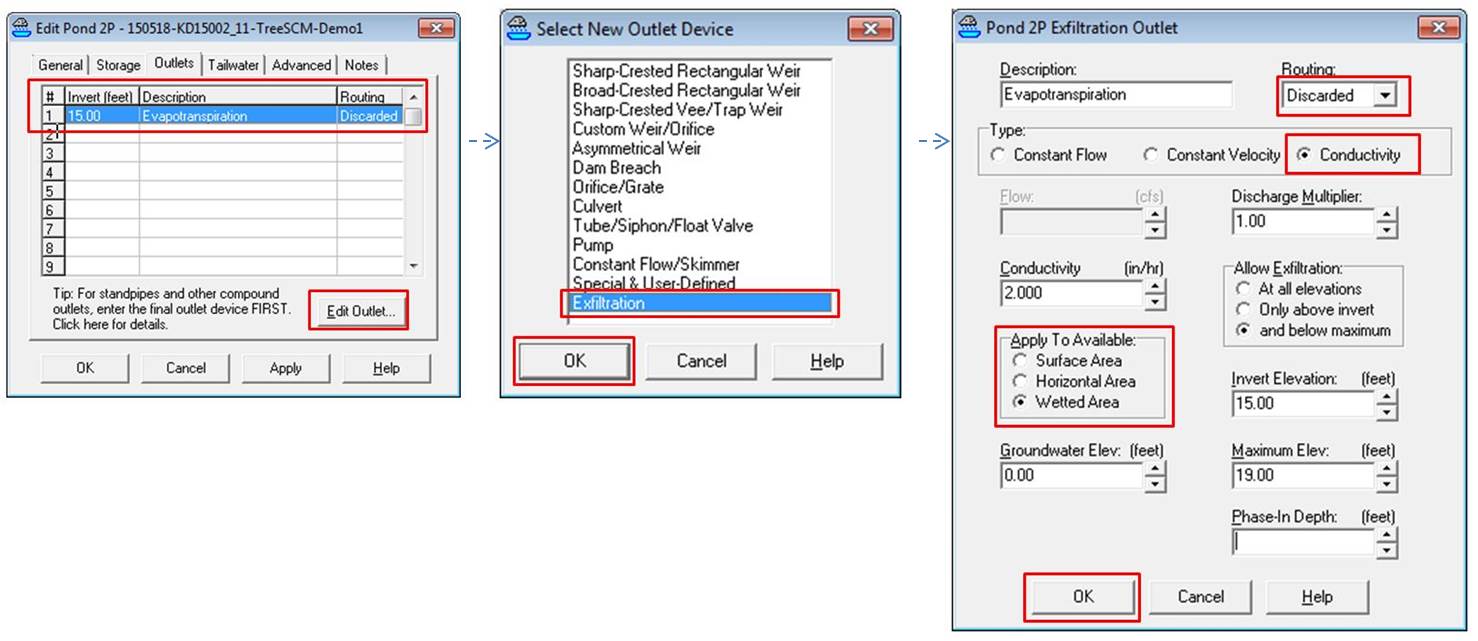
FIGURE 2-4. Setting up the Outlet Condition "Losses" for proxy ET for an example Tree SCM in HydroCAD within the "Pond" node. (Click for more detail)
There is no direct way to quantify evapotranspirative effects on stormwater rate and volumes, so you need to get a little crafty in order to model the Tree SCM. I recommend thinking through all of your inputs and outputs in terms of a water balance equation where all hydrologic effects can be thought of in terms of "inputs", "losses", and "storage."
The HydroCAD Chamber Wizard helps define the capacity of the tree SCM storage volume provided by the soil, rock, and/or other storage using "void space" volumes as a percentage of the overall media. There are over 250 common SCM "chambers" in their library that can be defined per the manufacturer's specification for stormwater effects. In essence, this tells you how much capacity you have in your "pond." From there, you need to think of evapotranspiration and exfiltration as "losses" from your system. These are modified while editing the "pond" in the outlets tab.
Evapotranspirative losses from trees do not occur with any significance during the actual storm event. They actually have the greatest impacts between storm events, when the atmosphere has the ability to take up water (atmospheric potential). This is why a Single-Event Stormwater model has a greater potential for error in both over- and under-estimating the Tree SCM benefits, via estimation of "losses," that might be better captured with a Continuous Simulation Stormwater Model. These complex models as applied to Tree SCMs will be explored in Part 3 of this series.
Further Resources:
- HydroCAD Sampler Main Page | http://www.hydrocad.net/sampler/index.htm
- HydroCAD Sample Download Page | http://www.hydrocad.net/sampler/download.htm
- HydroCAD Stormwater Storage Chambers List | http://www.hydrocad.net/chambers/index.htm
- HydroCAD Chamber Wizard Tutorial | http://www.hydrocad.net/chambers/wizard.htm
- HydroCAD Embedded Storage Tutorial | http://www.hydrocad.net/chambers/tutorial.htm
- HydroCAD Chamber Modeling Article | http://www.hydrocad.net/pdf/Chamber%20Article.pdf
- HydroCAD DeepRoot Silva Cell Modeling Article | http://www.hydrocad.net/deeproot.htm
Andrea Wedul is a sustainable landscape architect with the Kestrel Design Group.
[1] MN Stormwater Manual Wiki main page. 2015.
[2] MN Stormwater Manual Wiki "selecting a model". 2015.
Related posts

